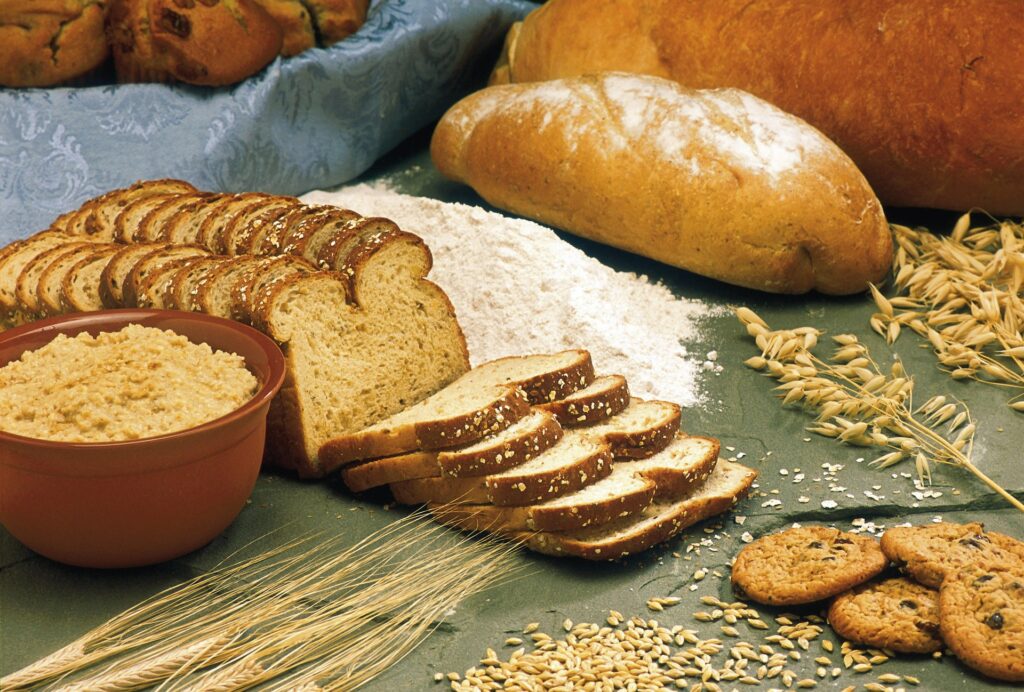 The confectionery industry, like many other industries, has changed significantly: Mainly due to the ‘plant-based revolution’ that gathers pace right across the food and beverage sector.
The confectionery industry, like many other industries, has changed significantly: Mainly due to the ‘plant-based revolution’ that gathers pace right across the food and beverage sector.
As analysts note, the steady rise in vegan trends in recent years is not a mere passing foodie fad; and the pandemic has fuelled this perspective among many consumers. This dynamic growth is creating innovation opportunities across a wide range of new food categories, including sugar confectionery. The number of confectionery products with a vegan claim has grown by over 25 per cent in the last five years (CAGR 2016-2021). However, while confectionery products with plant-based claims have continued to show a strong surge in growth, such products aren’t always simple to produce.
To develop vegan/vegetarian confectionery, animal-derived ingredients such as gelatine, milk and egg white must be replaced: The alternative ingredients need to provide similar functionality. An important factor to consider is price volatility, which is currently a major issue in the egg industry, with the recent Avian Flue outbreak in Europe and the US causing a 52% surge in egg prices. Therefore, manufacturers are now looking for egg alternative solutions for confectionery applications.
Plant proteins offer great functionality and can be considered as a solution. The use of proteins, such as emulsifiers and hydrocolloids, is aimed at producing high-quality products without compromising their physical, functional, organoleptic, and nutritional characteristics and a choice of economically advantageous ingredients. The rise in raw material prices, together with that of energy sources, is pushing manufacturers to look for ingenious solutions to find ingredients that are economically competitive and have a lower environmental impact.
From this perspective, waste ingredients from fruit processing and air can be used as a key component for future formulations. Air, like gases in general, can optimise the consistency of food and at the same time induce a feeling of satiety, linked to a reduced use of fats and calories, by conveying aromas and modulating the volume and geometry of the preparation. This leads the consumer to believe that he has bought more product (see also the phenomenon of “shrinkflation”, consisting in the use of packaging to conceal changes in the weight of the article).
The pandemic has also influenced the market: consumers make more responsible and healthy choices, prefer a lifestyle based on low-fat foods and sweets, and therefore less associated with chronic diseases. The undisputed role of fats in the “texture” of a product, in its taste and aroma, has directed research towards alternatives to fats that have similar chemical structure, including rheological properties during cooking and mixing. Fat replacers and fat mimetics are the viable alternatives to emulate the ability of fats to contribute to stability, palatability, crispness, interaction with water and other ingredients, and flavour.
In contrast, fat replacers (e.g. Olestra and Salatrim) derive directly, through an enzymatic process, from fats, and are chemically different from them, while fat mimetics derive from proteins, starches, hydrocolloid gums, polysaccharides and cellulose. The fate of these products will be determined by their ability to retain their consumer acceptance in terms of taste and texture, and the possible reduction of adverse health effects.
In this respect, the ability to combine recipe formulations in terms of ingredients with related “claims” declared for advertising and health purposes will become increasingly crucial. In this regard, recent market surveys highlight the demand for products related to environmental sustainability and animal welfare, but also to the functionality of what is purchased, such as the ability to fight fatigue, strengthen the immune system, or the intestinal flora: in practice, the general well-being of the organism.
Expectations also include the search for new and quality products, with the willingness to spend more on products that guarantee or promise benefits or present themselves as niche products, and in any case have a satisfactory taste, without neglecting appearance and texture, transparency, and traceability.

Natural Food Colours
The enhancement of natural ingredients also involves the search for new food colours, as:· Brilliant blue given by Spirulina: it is a pigmented protein known as phycocyanin; from its extraction a blue pigment is obtained that is stable at high temperatures, fading and resistant up to pH 3.0;
- Bright white from corn-starch: a new colour line offering a range of bright and stable whites to replace titanium dioxide (E171) which is being eliminated;
- new yellow and green tones from organic safflower.
Technology
Among the most important innovations on the market for sweet confectionery: scales are the key to ensuring accuracy during any type of high-quality preparation; by optimizing the timing, keeping track of the recipe history, we also have control on traceability and inventory rotation. The pre-crystallization of tempering of cocoa butter is a crucial step in chocolate production and has a major impact on the quality and cost of final product production: The use of high-power ultrasound (20 kHz to 100 W) increases the processing speed.
The future of vegan sugar confectionery
In this context, moving towards novel plant protein sources such as hemp, fava bean, sunflower and chickpea could allow the discovery of new aerating and gelling properties. Fermentation is also being investigated for its potential to develop clean label, better tasting plant protein ingredients with more performing properties.
Also, healthy snacking and functional gummies are a trend that continues to grow, as are the integration of vitamins, prebiotics, and probiotics. The use of fruit powders such as lime is continuing to expand. They are used in hundreds of applications, including confectionery, plant-based food and filling. These are fine, normally highly soluble powders with long shelf-life, making them ideal for use in food manufacturing.

Chocolate
The growth of the chocolate industry has always been promising since it is aimed at all age groups and social classes. For more than a decade, the chocolate confectionery market has been growing steadily thanks to various innovations in the sector: Vegan chocolates, healthier ingredients, innovative aromas, and the use of high-quality single-origin/premium chocolate. The use of healthy ingredients in the production of dark chocolate, such as stevia, honey, lactose-free ingredients, usage of nun-hydrogenated fats, and others, have attracted the most fitness-conscious population, while flavours like Chili, turmeric and ginger are the innovative flavour blends in the industry.
The new flavours include citrus flavours, vegetables, nuts, cereals, unusual fruits, rare cocoa, and florals. Although still niche, the usage of vegetables in chocolates is gaining popularity in Asian countries especially China. One of the vegetable-chocolate combinations are potato chips and chocolate. This excellent snacking option provides a salty flavour. Similarly, edamame and chocolate, wasabi and chocolate, and purple sweet potato and white chocolate are some of the popular vegetable chocolate combinations in the Asia Pacific region. Manufacturers are reducing the use of chemical additives such as emulsifiers and preservatives in the cocoa products.
Many companies are utilizing sunflower lecithin, which is a healthier and cleaner ingredient in chocolate products. For the consumer who prefers less processed food, usage of raw cacao is trending, obtained by slow roasting of cocoa and cold pressing it. This way all the nutritional content is preserved. The placing on the shelves of sweets (particularly chocolate bars and tablets) presenting formulations with an increased protein intake (a crucial trend in the food sector in general) and a reduced sugar content is constantly increasing: the recipients particularly interested in buying them are athletes, diabetics and persons on ketogenic diets.
This includes the use of whey proteins and sweeteners such as erythritol, whose costs are decreasing, allowing for wider use, and whose organoleptic similarity to sucrose makes it easy to include them in recipes without changing the formulations. The use of new ingredients must necessarily face the difficulties of producing defect-free products at a sustainable cost. However, consumers who are interested in quality sweets are prepared to pay a higher price. Chocolate tablets, for example, are ductile nutrient vectors unlike yoghurt, cheese and smoothies, which require refrigerated storage and therefore have a different shelf-life.
Sugar reduction
Health-conscious consumers are actively seeking to limit their consumption of sugar. As new regulations and health initiatives increase pressure on the food industry. Erythritol has a sweetening power of 60% compared to sucrose and is poorly absorbed by the intestine causing nausea, irritability, and laxative effect in excessive daily doses. Allulose is found naturally in fruits such as figs, kiwi, and raisins, but only in very small quantities.
It is available as a crystalline powder and melts easily in water. The sweetness of allulose is about 70-80% of that of sucrose, with only 10% of the energy intake (0.2 kcal/g). The FDA has approved its use in America since 2012, and it is also permitted in Mexico, Japan, Singapore, and South Korea. In Europe, EFSA is awaiting its inclusion among the Novel Foods.
Oleogel
Also, in the context of chocolate-based products trends, there is the experimentation of oleogel emulsions, in particular in spreadable creams and fillings, to replace cocoa butter, palm oil and coconut oil. The research is focusing on the progressive reduction of saturated fats, which are technologically important to give creamy, succulent, and lucid appearance: Oleogels are the result of a conversion of vegetable oils into more or less solid textures, using waxes, monoglycerides and ethyl cellulose.
Oleogels therefore allow the replacement of saturated fat quantities by increasing doses of polyunsaturated fatty acids in formulations, solving the technical and rheological difficulties of preparing creams by inserting water into a three-dimensional crystalline matrix. Further studies will be needed to test the viscoelastic characteristics and the extent to which the water activity of these products may influence microbial growth and consequently affect its stability, safety and saleability.
References
www.gamberorosso.it/notizie/food-tech-startup-innovazione-cibo-salutare



